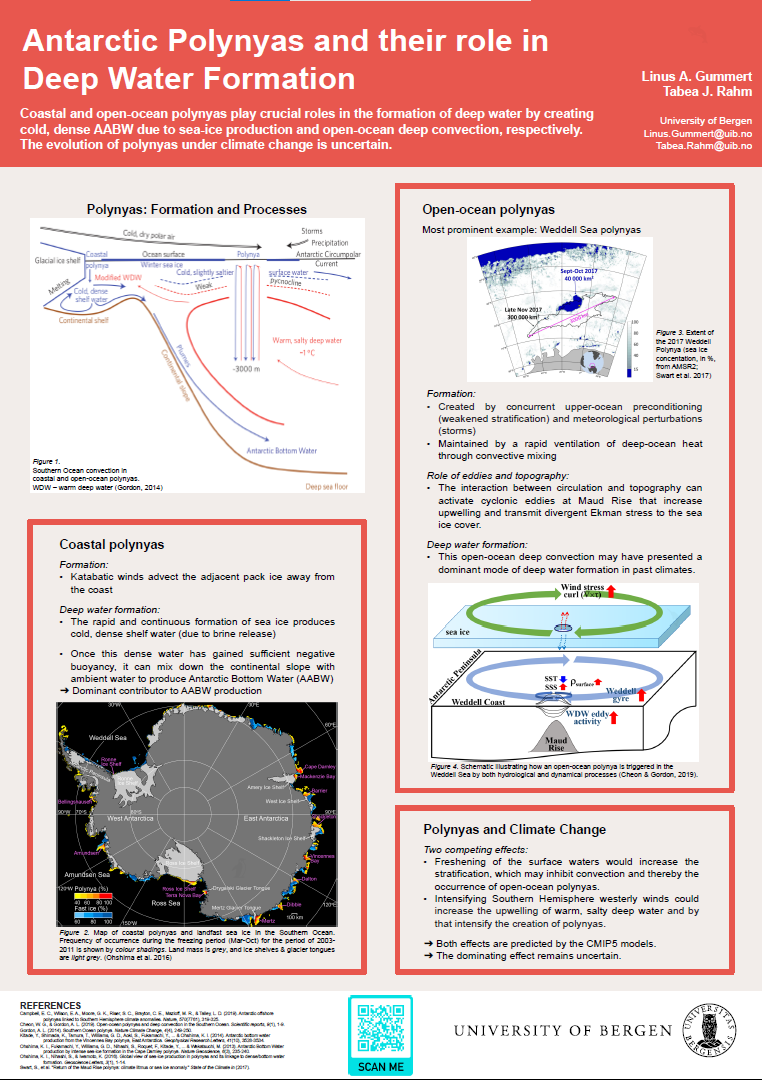Abstract
Polynyas are areas of open water or thin ice that are surrounded by sea ice and can stretch over hundreds of kilometres. They are created by concurrent upper-ocean preconditioning (weakened stratification) and meteorological perturbations (storms). Polynyas play a crucial role in the dense water formation in the Southern Ocean. For this, two mechanisms can be distinguished: First and predominantly, the formation of cold, dense Antarctic Bottom Water (AABW) due to sea-ice production above the continental shelf within coastal polynyas; and secondly, open-ocean deep convection within open-ocean (sensible heat) polynyas. In the present-day climate, the first mechanism is the dominant contributor to AABW formation, which accounts for 30-40% of the global ocean mass and is a key driver of the global overturning circulation. Under climate change, two competing effects for the formation of polynyas are expected to occur. A freshening of the surface waters would act to increase the stratification and thereby decrease the likelihood of polynya-formation. Opposingly, an intensification of the westerly winds around Antarctica would increase the upwelling of warm, salty deep water and by that intensify the creation of polynyas. It is uncertain which of these opposing factors will dominate in the future.


